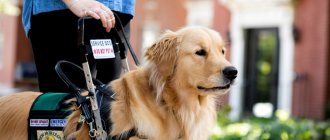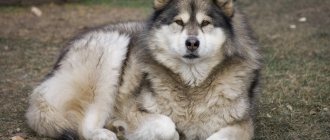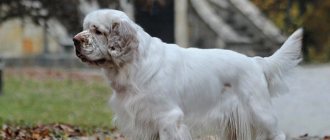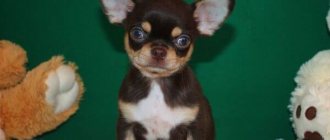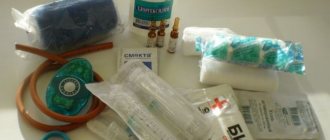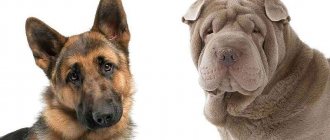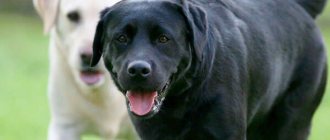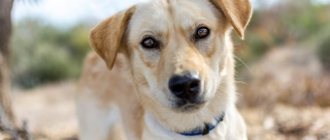Labradors are very popular, because such dogs have many advantages. Let's look at breeds similar to Labradors, the similarities and differences between them.
Peculiarities
Labradors are flexible and kind dogs. They train very well, trust people and have excellent hunting qualities. Such animals can accompany blind people, treat autistic children, and search for people. Labradors are very hardworking and helpful to people. There are breeds related to the Labrador.
These dogs have similar qualities, however, all breeds have their own unique characteristics.
Groenendael
This gorgeous European Cattle Dog comes only in black or sometimes black and white, making it one of the unique black dog breeds. These hard-working Belgian Shepherds give 100 percent, whether they're playing or working.
The Groenendael is a very sensitive dog that is deeply attached to its people and does not cope well with loneliness. Its long and luxurious coat requires regular grooming. But will anyone complain? It's hard to resist such a cute face.
Golden retriever
Golden retrievers are also called goldens. Such dogs are especially similar to Labradors, and people who do not understand the breeds very often mistake one for the other. However, there are still differences, and they are quite significant. The Golden is lighter than the Labrador, it is less strong and stocky. Golden Retrievers have a slightly curly coat that is longer and softer. There are no brown or black goldens; such dogs are only golden or fawn.
As for character, there are also differences. Golden retrievers are calm and intelligent, while Labradors are simple and spontaneous. If you throw a stick into a river for dogs, you will notice a significant difference in their behavior. The Golden will first think about how best to run for the stick, evaluate the distance and many other factors, and the Labrador will start running almost immediately. As for hunting, Goldens are only suitable for ducks, while Labradors are more versatile and can also bring hares.
Living conditions, education and training
And although both breeds have innate character traits, their behavior can be corrected through education “from a young age” and training.
Both dogs get along easily in an apartment, but with a retriever it is easier in this regard - he is calmer and does not require as much activity as his short-haired brother. These dogs cannot be kept in a confined enclosure or on a chain - they need the presence of a person nearby, otherwise they may become sad or start mischief.
- I miss!..
Since the Labrador loves everyone and everything and is ready to play even with a stranger, this is where the main danger lies. It will not be difficult for a stranger to take your dog away, so you need to keep an eye on it. In general, representatives of both breeds should be taught from childhood not to approach strangers in order to avoid trouble.
Chesapeake Bay Retriever
These are the only American retrievers. Because their coat is coarse, thick and short, and their ears are set quite high, they are better at fetching heavy prey and working in cold weather than Labradors. Chesapeakes are very hardworking, but at the same time they are quite capricious and stubborn, so it is necessary to devote a lot of time to raising and training such dogs.
The Chesapeake Bay can fend for itself, but it is not aggressive towards other animals. Ordinary people almost never buy American retrievers: they are more suitable for experienced hunters.
In our country, representatives of this breed are very rare.
Chihuahua
The Chihuahua is the polar opposite of the Great Dane. They usually weigh no more than 2.7 kg. However, this small body is full of vital energy! They get along well with older people and cats. Their most recognizable feature is their bat ears and high-pitched, frequent bark.
Fun fact : The smallest dog in the world, Brandy, is a Chihuahua measuring just 15.2 cm from nose to tail.
Because of their tiny size, Chihuahuas are ideal apartment pets . They have a gentle, caring and very playful temperament. Chihuahuas are easy to train and easy to care for. It is well suited for novice owners.
Curly coated retriever
This breed is called "Curley". Curly-coated retrievers are the oldest. This is a cross between an Irish Water Spaniel and a Newfoundland. Relatives of such dogs are also Labradors, poodles and setters. Curly-coated retrievers are less sociable than Labradors. They are more reserved and calm.
Curleys perform well as guard dogs and are wonderful hunters, like all retrievers. Their fur is brownish or black. The coat consists of a large number of hard curls.
People who are serious hunters most often prefer brown Curlies because such dogs are more difficult to spot on the banks of lakes and rivers.
Differences in walking and hygiene
Both Labrador and Retriever are naturally active dogs, so short walks “on business” will not be enough. They need to throw a ball, a stick, and encourage their active lifestyle in every possible way.
These dogs are perfect for runners or swimmers - in both cases, they will happily keep their owner company.
As for hygiene, the difference here is due to the difference in coat. The retriever must be brushed daily, especially during the molting period, to prevent the formation of mats. Goldens participating in exhibitions need grooming. But for a Labrador, periodic removal of dead hairs with a damp cloth is enough.
Professional care
It is worth bathing dogs as soon as their fur gets dirty. Dry shampoo is suitable for frequent grooming of a retriever. Labrador is not worth it, so as not to damage the natural moisture-repellent layer on the coat.
Labrodoodle
This breed appeared relatively recently. Official cynological organizations have not yet recognized it. These dogs combine a variety of breeds: curly-haired retriever, poodle, Labrador and others. Labradoodles can be called ideal: from poodles they received wonderful hypoallergenic wool that does not tangle, and from Labradors they received an absolutely balanced nervous system. These dogs were bred specifically for blind people prone to allergic reactions.
Labradoodles come in a variety of colors, from black, silver to light brown, cream, and white. Such dogs are miniature in size and standard. When choosing a pet for his children, Barack Obama especially singled out the Portuguese Water Dog and Labradoodle. In the end, he still chose the first option, but Labradoodles still immediately became very popular.
Nova Scotia Retriever
This dog is also called a toller. She looks like both a golden retriever and a labrador. The task of the tollers is quite complex: they lure the ducks so that they are within shooting distance, and then bring back the killed birds. Nova Scotia retrievers appeared relatively recently, but they have already gained great popularity in European countries, especially in Scandinavian countries. Tollers are quite low (height at withers - up to 50 cm).
Nova Scotia Retrievers can be kept in urban environments, however, it should be borne in mind that usually the character of such a dog is quite complex . The owner of the toller will have to make a lot of effort to convince him to constantly carry out the same commands. Training such an animal should be varied and multifaceted.
The dog is very smart, but cannot stand monotony . Tollers are indifferent to strangers (Labradors are usually more sociable and friendly).
Most often, such a puppy chooses one person in the family and considers only him as the owner. In Russia, representatives of such breeds are rare.
Lifespan
The lifespan of dwarf Labradors is affected by genetic disruptions in the animal’s physiology, which results in a decrease in the body’s protective properties.
They are susceptible to the following diseases:
- cataracts – develops mainly with age;
- epilepsy - manifests itself between the ages of six months and three years;
- retinal atrophy is not curable and leads to complete blindness;
- allergies - can develop as a result of the bite of ticks or other insects;
- skin disease - caused by fungi, parasites;
- otitis - can appear when the ears are poorly cleaned or ear mites appear in them.
Skin diseases of pets
The life expectancy of these babies is low, on average 12 years. But with proper care and feeding, constant physical activity, regular visits to veterinarians, and timely vaccination, this period can be increased.
Small
The Flat (straight-coated retriever) is very similar to the Labrador. The size of such dogs can be called average: their height at the withers does not exceed 60 cm. Flat-haired retrievers were known in European countries even before the appearance of Labradors. These dogs were often owned by hunters. At the beginning of the 20th century, Flats were slightly replaced by Labradors and Golden Retrievers, however, such dogs again began to gain great popularity, because they are light and compact.
Flat-coated retrievers are less prone to joint pathologies than Labradors. They are not very aggressive, but they have a remarkable guardian instinct. Mini-copies of Labradors were also bred: they appeared as a result of inbreeding and deliberate experimentation by breeders.
However, they did not gain much popularity because they had many diseases due to defective genes.
The agony of choice
to the question “ which dog is better : a Labrador or a golden retriever .”
You need to clearly understand why you are purchasing a pet, and analyze your own strengths, capabilities, and resources. When choosing, you should take into account your lifestyle, family composition, availability of free time, energy and finances. Each of these dogs amazes with their intelligence, peacefulness and optimism, but the temperament and disposition of the dogs are different: Labradors are emotional and slightly clumsy merry fellows, and Goldens are sensible and reserved English aristocrats.
Before you choose a Labrador or Golden Retriever, figure out what you want from life. If your style is “peaceful equanimity,” then Golden is closer to you, but if it’s the other way around, then Labrador is the ideal choice. If there are small children and representatives of the older generation in the family, you should take a closer look at the good-natured golden dogs, but if you have a young and active family, go to the nursery for a Labrador puppy.
Longhair
Long-haired setters and Nova Scotia retrievers are similar in appearance to Labradors. The coat of Golden Retrievers, which are the closest relatives of Labradors, is very much reminiscent of the slightly curly, soft and airy coat of Setters and Tollers. It can be said that Newfoundlands are also very similar to Labradors. Newfoundlands resemble them in their body structure and proportions, but at the same time such dogs can be called simply huge, they are much larger.
See the following video about the characteristics of Labradors.
Labradors are one of the five most popular breeds in the world and their popularity is only growing every year.
They are known for their kindness and easy-going nature.
The excellent trainability of the breed, combined with an unconditional trusting attitude towards people and genetically inherent hunting qualities, is successfully used for the benefit of people: this includes search and rescue work, canistherapy (treatment of children with autism, cerebral palsy with dogs), and accompanying blind people as dogs. guides.
It is difficult to imagine a more hardworking dog that would bring so much benefit to a person.
What dog breeds are similar to Labradors?
The Labrador Retriever is a universal breed , but there are also related breeds, mostly also belonging to the group of retrievers and having qualities similar to the Labrador .
Each of these breeds is unique in its own way. These are golden retrievers, straight-haired (flat), Chesapeake Bay retrievers, curly-haired (curley), Nova Scotia (toller).
Don’t forget about setters and Newfoundlands, whose blood flows in Labradors, as well as the recently developed Labradoodle breed, a cross between a Labrador and a poodle, whose popularity is rapidly growing due to the unique combination of the excellent qualities of both breeds and almost one hundred percent hypoallergenicity.
Golden Retriever (Golden)
Goldens are the closest relatives to Labradors and people who are not very knowledgeable about the breeds often confuse them, although there are differences, and they are significant.
These are lighter-boned dogs, less squat and strong than Labradors, with less body weight. Their coat is softer and longer, going into a slight curl. Only different variants of fawn and golden colors are acceptable, while among Labradors black and brown colors are acceptable.
They also differ in character. If Labradors are straightforward village bumpkins, then Golden Retrievers are imperturbable intellectuals.
They will have different reactions to a stick thrown into the river: the Labrador will be at the place where the stick fell even before it lands, and the Golden, looking into the distance, will think about the speed of its flight, wind resistance and the direction of the water flow in the river, and then, perhaps, deigns to run after her.
In hunting, Labradors are more versatile dogs: they can bring both a duck and a hare . Golden Retrievers are primarily used for duck hunting only.
Goldens, like Labradors, have the so-called. "soft mouth"
Among dog handlers and breeders, the egg test is known, when a dog is given a raw egg in its mouth and it holds it so carefully with its teeth and brings it to the right place that it is not crushed, but does not fall either..
Chesapeake Bay
Of all the retrievers, they are the only ones of American origin: they come from Virginia and Maryland, the coast of the Chesapeake Bay.
Due to their short, thick and coarse coat and high-set ears, they are better suited than Labradors for working in cold water and feeding heavy game.
Chesapeakes are real hard workers, but they are quite stubborn and willful, so you need to pay closer attention to training.
This breed is not inclined to show aggression towards other dogs, but it can still stand up for itself if necessary.
Chesapeake Bay Retrievers are practically not people: mostly, their owners are professional hunters . In Russia, the breed is represented by literally single individuals.
Curly-haired (curly)
The oldest of all retrievers, the curly-coated retriever is a cross between a Newfoundland and an Irish water spaniel.
Its relatives also include setters, poodles and, of course, Ladbadores. This breed is tougher and larger than the Labrador Retriever. Curleys are more restrained in expressing their feelings and are much less contactable.
The only retrievers that exhibit guarding qualities, but at the same time, like all retrievers, they are excellent hunters.
Their coat is waterproof and is a continuous mass of hard curls of black or brown color.
Hunters prefer to purchase brown-colored curlies, as they are less noticeable on the coastlines of rivers and lakes..
Labrodoodle
This is a new breed, not yet recognized by official canine organizations, which carries the genes of a Labrador, a poodle, an Irish water spaniel, a curly-haired retriever, an American and a cocker spaniel (Australian Labradoodle), or only a Labrador and a poodle.
IMPORTANT!
Absolute balance of the nervous system, inherited from Labradors and a unique hypoallergenic coat that does not mat, characteristic of poodles, plus exceptional intellectual qualities of both breeds - and we have the ideal dog!
The breed was bred specifically for blind people who are allergic to dog hair, as a guide dog.
Labradoodles come in many color options, from cream and coffee to silver and black . They come in standard and miniature sizes.
Unfortunately, these dogs, along with the advantages of their parent breeds, also inherit their diseases. Breeders are constantly working to improve the health of subsequent generations of dogs, controlling the degree of inbreeding, which should be no more than 5%.
When choosing a pet for his daughters, Barack Obama chose a Labradoodle and a Portuguese Water Dog.
And although he chose a Portuguese merman, the popularity of Labradoodles in the world instantly increased and not only enthusiastic enthusiasts began to talk about the breed.
Nova Scotian (toller)
The Toller is similar to a Labrador and at the same time to a Golden Retriever, the full name of which is “Scottish duck-calling retriever.”
A dog of this breed has a rather difficult task - to lure a duck with games at a distance from which it can be shot, and then bring it to the owner.
The Toller is the youngest, but quite popular type of retriever in Europe, especially in Scandinavia..
The relatively small size (45-51 cm at the withers) makes tollers suitable for keeping in urban environments, although by nature they are quite difficult dogs and the owner needs to work hard to convince the toller to carry out the same command an infinite number of times.
Toller training should be multifaceted and varied, so that a dog that is smart, but does not like to repeat monotonous exercises, learns to hear and listen to its owner.
Unlike Labradors, Nova Scotia retrievers are indifferent to strangers, and in a family they often choose one person and only consider him their master . In Russia, tollers are extremely rare.
Breeds with long hair
Among long-haired dogs, the exterior qualities of Labradors are present, first of all, in the Nova Scotia Retriever, as well as in setters - hunting dogs that were directly involved in the development of the Labrador Retriever breed.
The airy, soft and slightly curly coat of Tollers and Setters is similar to the coat of Goldens, the closest relatives of Labradors.
Newfoundlands can also be called similar to Labradors..
Despite their enormous size, these are docile and loyal dogs that love children very much. In terms of proportions and body structure, divers are similar to Labradors, only many times larger.
The features of a Labrador are also visible in the muzzle and ear set, because it is not without reason that Newfoundlands participated in the breeding of this breed.
Useful video
From the video you will learn everything about the Labrador dog breed:
join the discussion
Share with your friends
Labradors are very popular, because such dogs have many advantages. Let's look at breeds similar to Labradors, the similarities and differences between them.
Breeds similar to Labrador, but smaller
The dog closest to the Labrador, but smaller in size, is the straight-coated retriever, or flat.
These are medium-sized dogs: the height at the withers in males does not exceed 61 cm.
Flats were known in Europe even before the breeding of Labradors and were actively used in hunting.
Over time, at the beginning of the 20th century, Golden Retrievers and Labradors slightly replaced the Flats, although now the breed is regaining popularity due to its compactness and lightness.
Just because of their lighter constitution, Flats are less prone to joint diseases than Labradors. They have a well-expressed protective instinct, but without excessive aggressiveness.
There are also mini-Labradors that appeared as a result of deliberate experiments by breeders or inbreeding.
CAREFULLY!
They have not gained recognition as a separate breed and have many health problems due to the presence of defective genes that slow their growth.
All breeds related to the Labrador have both similar features and their own characteristics, but, despite the different colors, length of coat and character, all these dogs, without exception, are united by one distinctive feature: the membranes between the toes on their paws, which make them excellent swimmers.
As you can see, there are enough dog breeds similar to Labradors and everyone can choose a breed that is more suitable for their requirements and living conditions.
Whether it is a Golden Retriever or a Labradoodle, or any other related breed, you can be sure that the basic Labrador qualities - lack of aggression and friendliness - will be present to a greater or lesser extent in each of them.
How to choose a puppy
When choosing a retriever puppy, you should contact established kennel clubs and professional breeders. Since representatives are very popular as a pet, there was uncontrolled mating and sale of puppies. Because of this, retrievers today are predisposed to hip dysplasia, diabetes, epilepsy, and eye diseases. It is important to carefully read the pedigree, examine the puppies, and be sure to have them examined by a veterinarian.
From the litter, it is best to choose the most active, well-fed and healthy baby without external signs of pathologies. Pay attention to his eyesight, joints, coat condition and gum color - they should be a uniform pink color. The cost of a retriever puppy starts from 25,000 ₽.
#Golden retriever
Let's start, perhaps, with the golden retriever itself.
Golden
#
a retriever is a hardy and energetic dog that has a good memory and instinct, allowing it to work perfectly both on land and on water, where it is able to find downed game.
Golden Retrievers were originally bred to hunt (fetch game).
Currently, golden retrievers have successfully mastered many other professions.
They work at customs, search for drugs and explosives, and participate in rescue operations
[1].
Story
The Golden Retriever was bred in England as an all-purpose hunting dog for retrieving game. Shares the same ancestors with the Labrador.
According to one version, which does not have any documentary evidence, the appearance of the breed is associated with the name of Lord Tweedmouth, Sir Dudley Majoribanks. In 1858
he visited Brighton at a performance of a visiting circus, where in one of the rooms he saw dogs that amazed him with their intelligence. He was so captivated that he immediately purchased eight dogs from the circus.
However, the most complete information about the formation of the breed is available in the huntsman books kept by the Scottish estate of Gwisekan Lord Tweedmouth from 1835 to 1890
. According to these books, the breed was formed by crossing the now extinct Tweed Water Spaniel - a large light brown dog with curly hair, small feathering on the ears and front legs - and a small type of Newfoundland. Retrievers also received the blood of Irish setters, water spaniels and bloodhounds[1].
Appearance
The Golden Retriever is a well-built dog with strong and muscular limbs and round paws.
The head is proportional to the body, the parietal part is wide. The transition from forehead to muzzle is well defined. The nose is black. The eyes are dark brown, widely spaced, with dark edges of the eyelids. The ears are medium-sized, drooping, set approximately at eye level. The neck is muscular and quite long. The chest is wide. The tail is long and never curls. The coat is straight or wavy, the thick undercoat is almost impermeable to water. The color can be any shade of gold or cream.
Sometimes there may be small white spots on the chest. White Golden Retrievers are considered breeding grounds.
The height at the withers of males is from 56 to 61 cm, females - from 51 to 56 cm. Weight of males - 26-41.5 kg, females - 25-37 kg
[1].
Proper feeding
The easiest way to feed a mini retriever is dry, balanced food. The approximate ratio of feed per 1 kg of weight should be:
- proteins - 10-15 grams;
- carbohydrates - 3-5 grams;
- fats - 1-2 grams.
A natural diet should contain micro and macroelements and vitamins. Natural nutrition should consist of the following components:
- lean boiled meat beef, chicken, horse meat;
- boiled marine fish without bones;
- porridges cooked in broth (rice, buckwheat, corn);
- fresh vegetables and fruits, previously finely chopped or grated;
- fermented milk products;
- hard-boiled eggs, but no more than 2 per week.
Puppies up to 2 months are fed 6 times a day, from two to four months - 5 times a day, from four months - 4 times. An adult dog is given two meals a day.
Do not overfeed your pet. Obesity can lead to diseases: diabetes, pancreatitis, arthritis, joint disease, bone disease, osteochondrosis, premature rapid aging.
You should not mix natural food with dry food, this can lead to problems with the gastrointestinal tract.
Overfeeding leads to obesity
The cause of obesity in Labradors can be not only the owner’s desire to please his pet with something tasty, but a malfunction of the thyroid gland can lead to excess weight. If a blood test does not show hypothyroidism, it means that the animal is simply overfed. You should reduce the portion of food and increase physical activity.
Important! The diet should be compiled based on the weight of the ward, and not his appetite.
Curly coated retriever
A short story about the curly-haired retriever himself.
Curly Coated Retrievers are quite different from other retrievers.
Even in modern realities, Curlies are working dogs and hunters, and they are also one of the few retrievers capable of being a guard.
This breed is not suitable for keeping in a family with children, because it is not a companion at all; the curly-haired retriever is a working dog.
Story
This is the first retriever included in the register of the English Kennel Club.
The first mentions of the first dogs of this type begin in documents
of the 16th century.
The breed traces its origins to setters and English water spaniels.
Later they received the blood of the Irish Water Spaniel, as well as the now extinct St. John's Newfoundland breed, which were the ancestors of modern Newfoundlands and Labradors. According to some reports, in the second half of the 19th century,
poodle blood was also infused into them to improve the quality of their coat.
Appearance
The Curly-Coated Retriever is a large and hardy dog of a square format and slightly loose build; the height of males can reach 68 cm, the height of females on average up to 62-63 cm.
Wool has no undercoat
thick, short, collected in characteristic dense curls, tightly adjacent to the skin. It is for the wool that the breed got its name.
Acceptable colors are black and all shades of brown and liver.
In this case, the color of the nose, lips and eyelids should be in harmony with the color of the coat [2].
#Labrador Retriever
And now we will talk about the most popular retriever.
# The Labrador
Retriever was originally a hunting gun dog, but is now primarily a companion dog. In the modern world, Labradors are also often used as guide dogs and rescue dogs.
Story
The history of Labradors begins on the island of Newfoundland in the 19th century, when there were “little Newfoundlands” who were faithful assistants to fishermen.
The Englishman Peter Hawker brought several of these individuals to Great Britain, which he called “St. John's Breed of Newfoundland." From crossing these dogs with the Curly Coated Retriever and possibly the English Foxhound and Setter, the Labrador appeared.
The first breed standard was established in 1887. In 1903, only black Labradors were recognized by the English Kennel Club, but at the end of the 20th century, fawn became another acceptable color, and even later, chocolate.
Appearance
These are dogs of strong build. They have a wide skull, as well as a wide and deep chest at the ribs; The loin and hindquarters are wide and strong.
The coat is double - a guard hair that is hard to the touch and a weather-resistant undercoat.
Solid color: black, fawn, brown (sometimes called liver or chocolate).
In black and brown dogs, a small white spot on the chest is acceptable [3].
#Nova Scotia Retriever
Like other retrievers, Tollers are dogs that can excel not only in hunting, but also in agility, obedience and other canine sports.
But training a Toller is considered somewhat more difficult than training Golden Retrievers and Labradors.
This is due to the fact that monotonous repetition of commands is not very interesting for a smart and active toller, so training a Nova Scotia retriever should be as varied as possible.
Story
This is the youngest breed of all retrievers.
The official name of this breed is Nova Scotia Duck Tolling Retriever, that is, “Nova Scotia Duck Tolling Retriever.”
Tollers were bred by Canadian hunters to lure birds (tolling) and then present the shot bird. The breed was recognized in Canada in 1945, and the FCI in 1987.
Appearance
The Toller is significantly smaller than other retrievers, its height is only 45-51 cm.
It is a compact, tan-colored dog with white markings on its paws, tail, chest and face.
Currently, Tollers are a fairly popular dog in many European countries, primarily in Scandinavia.
Their small size makes Tollers very convenient dogs for keeping in an apartment [4].
German dog
Have you always wanted a pony but only have room for a dog? Well, the Black Great Dane may be the middle ground you never knew you needed! The Great Dane, up to 82 cm tall at the shoulders, towers above people when standing on its hind legs, and above almost any other dog when standing on all fours. Despite their enormous size, Great Danes are typically gentle and patient , making them excellent family dogs who bond closely with their people.
Fun fact : The Great Dane named Zeus, recognized by Guinness World Records as the tallest dog in the world in 2012, measured 112 cm at the shoulders. His height when standing on his hind legs exceeded 213 cm !
Great Danes have a big appetite and a big heart; the only pity is that these huge hearts are predisposed to heart disease.
#Straight-coated retriever
Flat-Coated Retrievers are hardy, energetic dogs with a keen sense of smell.
Thanks to its excellent swimming ability and ability to dive, it can hunt both wading and waterfowl.
Flat-haired retrievers have a sociable, friendly character and are not prone to aggression. This breed needs gentle but persistent training, as dogs are highly emotional. For the same reason, they are very sociable and do not tolerate loneliness well.
Story
The development of the Flat-Coated Retriever dog breed began in Great Britain in the mid-19th century. They were bred specifically for use in gun hunting for waterfowl.
. The breed is based on the blood of the Irish Setter, English Pointer and Labrador Retriever. From the Labrador Retriever the dogs inherited good swimming ability, and from the Irish Setter and Pointer they inherited good gun-working ability and high sense of smell.
The Flat-Coated Retriever was first shown at an English exhibition in 1860, which was held in Ettington Park.
Appearance
Dogs of this breed have a harmonious build, narrow and light bones.
The general impression that representatives of this breed give is that they are strong animals adapted to long and active movement. The movements are light, creeping.
The coat is smooth, dense, and fits well to the body. Silky to the touch, may seem oily.
At the bottom of the belly, on the paws and tail, the fur forms rich decorative feathers.
Colors are allowed only in solid colors, black and all shades of liver.
#Peak-hour-bay-retriever
Chesapeakes are real hard workers, strong and tireless dogs, but to realize all their qualities they need a firm hand from their owner.
The typical Chesapeake is a pronounced individualist; he is not the first to show aggression towards other dogs, but he does not give in.
History
The Chesapeake Bay Retriever is the only one of the six retriever breeds that has American roots. The homeland of the Chesapeake is Virginia and Maryland, located on the coast of the Chesapeake Bay. This is the land of ducks, local hunters needed an excellent working dog, so the main purpose of the Chesapeake Bay Retriever from the very beginning was and is hunting.
Appearance
This breed is very well adapted to work in cold water with an icy crust.
The ears are set high, small, rather thick, comfortable for a dog that swims a lot in the water. The short, strong neck somewhat disrupts the overall proportions, but is very important when retrieving heavy game. The coat is short, thick, coarse, reminiscent of a plush blanket. The coat is impermeable to water. The most desirable color is the color of withered grass, but variations from dark brown to light straw are acceptable. The eyes are amber yellow. The paws are quite large, with noticeable webs.
Height at the withers of males is 58-66 cm, females - 53-61 cm, weight of males - 29.5-36.5 kg, females - 25-32 kg.
Well, that’s all, we hope that now you know much more about retrievers!
